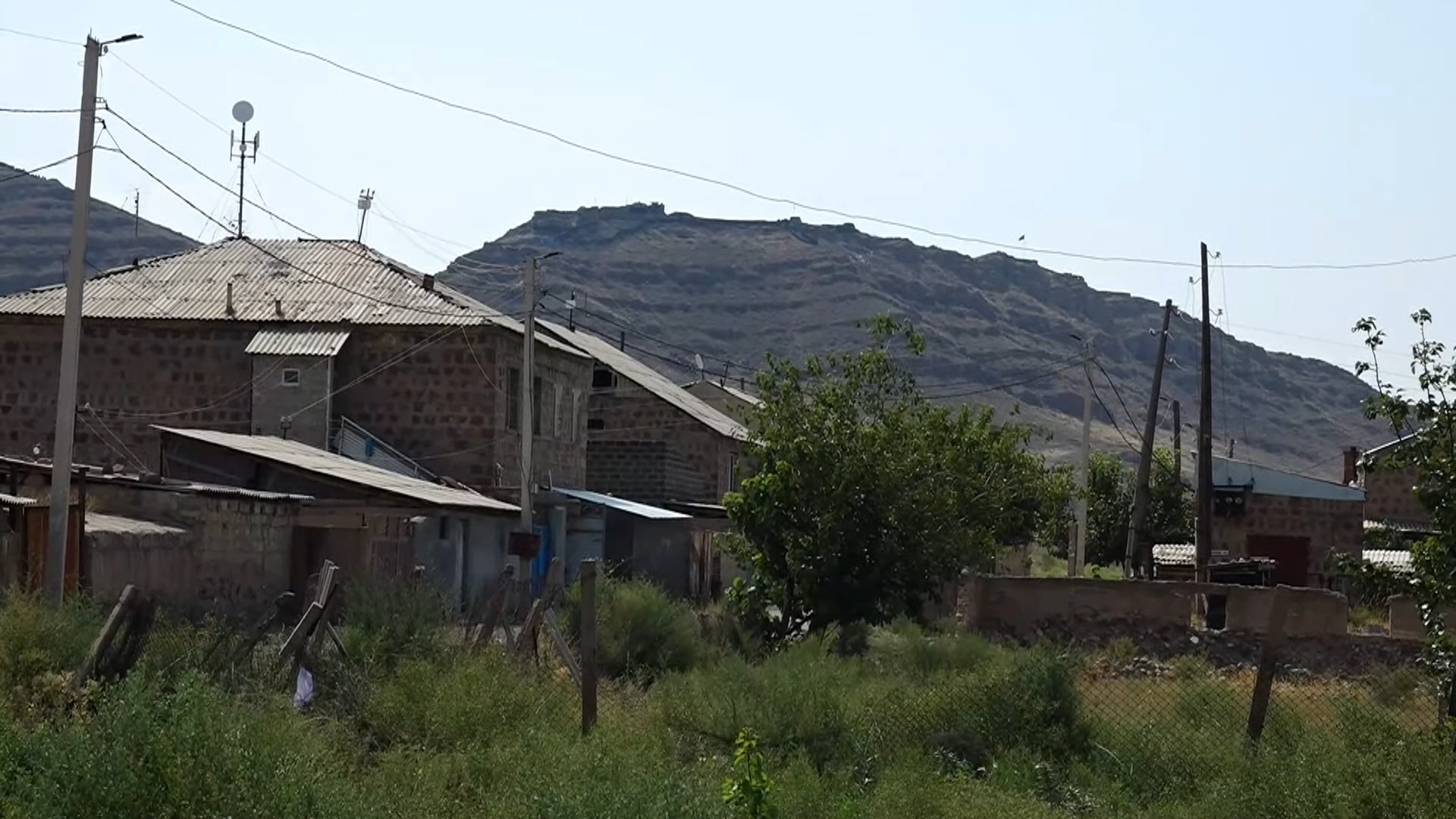There has been unrest in the village of Yeraskh, 70 km from Yerevan, since July 14. From that day on, the Azerbaijani armed forces started firing in the direction of the Yeraskh positions on the Armenian-Azerbaijani border. No shots were fired in the direction of the village, but the residents of Yeraskh said that the gunshots were heard in the village. There is anxiety among the residents.
“The shootings started on July 19. The intensity of the shots was low at six or seven o’clock, but increased after 11 o’clock pm. We did not sleep all night; we were sitting outside, we wanted to know what was going to happen,” said a Yeraskh resident, adding that the shooting had decreased relatively after midnight, but at 7 or 8 in the morning the shots were heard again.
On the night of July 19-20, Yeraskh village mayor Radik Oghikyan received a gunshot wound. His arm and shoulder were injured. He was given first aid at Ararat Medical Center, and then transferred to Astghik Medical Center in Yerevan. According to the Ministry of Defense, at that time, the mayor was organizing work to extinguish the fire, which broke out in the area as a result of the actions of the Azerbaijani side.
“The tires put on the positions were burnt by the shots fired by the Azerbaijanis. The head of the village went to help put out the fire, but was wounded,” said another resident of Yeraskh.
To remind, on July 14, a 38-year-old contract soldier died from a gunshot wound in the Yeraskh section of the border of Armenia with Nakhichevan [Azerbaijan]. According to the official information, we have one victim and one wounded as a result of the border tension in Yeraskh. The residents of Yeraskh mentioned another wounded person, however; the governor of Ararat Razmik Tevanyan denied this information in a conversation with us.
There is anxiety in Yeraskh, but the residents assure that there is no panic and no intention to leave the community. “We will not go anywhere; we will not give an inch of land to the Turks. Where will we reach by giving up an inch every day?” say the residents.
Benjamin Poghosyan, director of the Center for Political and Economic Strategic Studies, says that Azerbaijan is keeping tension in the Yeraskh position in order to fulfill two wishes.
According to the political analyst, Baku wants to impose on Armenia and other interested states that, in case of unblocking of roads, Azerbaijan should join with Nakhichevan via Syunik territory.
“I assess the Armenian-Azerbaijani border tension as a pressure on the Armenian authorities and society to firmly fulfill the agreements reached in the trilateral format. As for now, the only issue unfulfilled if that of unblocking the roads, but the most important issue here is how Azerbaijan will join Nakhichevan.
The question now is how those roads will go. I suppose that in the November 10 document [on ceasefire], when the 9th point was added, there was a certain mutual understanding that those roads will pass through the territory of Syunik region. This is categorically not beneficial for Armenia and, as far as I imagine, it should not be beneficial for Russia and all the players in general – Iran, the EU, the US, because if those roads pass through Syunik, it means that, in 10-15 years, Azerbaijan and, mediately, Turkey too will exercise control over Syunik. I do not see a logical explanation for why Russia and other players should be interested in this. I do not think it is in the interests of these countries to further strengthen Turkey’s position,” he said.
Beniamin Poghosyan thinks that Armenia is trying to resist Azerbaijan’s wishes for the roads to pass through Syunik region.
“Russia is also not inclined to have the roads to go through Syunik, and that border pressure from Azerbaijan is directed at Armenia to fulfill the agreement, and Russia to force Armenia to take that step. Azerbaijan wants to show that it has sufficient resources to keep the region permanently unstable. Moreover, it keeps a very large area unstable, taking into account how huge is the area from Gegharkunik to Yeraskh. This is a signal to Armenia on the one hand, and to Russia on the other, that it is time for the agreements on opening the communication channels to gain legal force, and it is important for Azerbaijan that these roads pass through Syunik region,” said Baniamin Poghosyan.
According to the analyst, by provoking border clashes, Azerbaijan wants permanent instability in the Armenian inhabitancies, so that the residents living there are concerned about their security.
“This is done so that the residents do not link the future of their children, if not themselves, to those communities, as they will live under threat of being killed.” Azerbaijan understands that the fewer people live in border areas, the greater the chance for Azerbaijan to settle there,” he said.
Narek Kirakosyan

